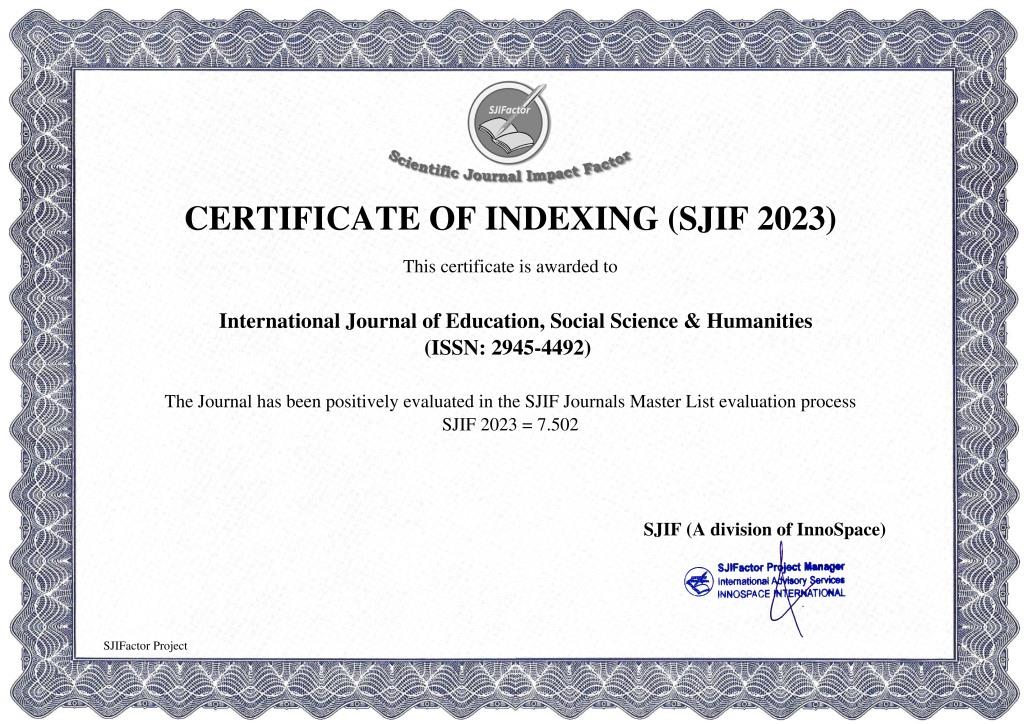THE ROLE OF CULTURAL AWARENESS IN ENGLISH LANGUAGE TEXTBOOKS
Keywords:
Cultural awareness, globalization, consciousness, universal language, textbooks.Abstract
The goal of teaching English as a second language is for students to be able to speak and write the language and comprehend the culture of the target language. Cultural content is regarded as essential as a means of instruction for enhancing language proficiency, cultural comprehension, and appreciation of diversity. The purpose of English textbooks was twofold: as language and cultural learning resources. The following are the findings:
1) The social materials were isolated into three kinds of source data.
2) The way of life materials were for the most part introduced into text as opposed to general media.
3)English textbooks contained four cultural components: products, practices, and perspectives of individuals
Students can develop character and moral values through cultural materials, enabling them to live and interact in a multicultural society.
References
Aijala, H. (2009). Acquiring intercultural competence from coursebooks: Analysis of learning tasks in the Finnish Upper Secondary School Coursebook Series In Touch. (Second Subject Thesis). University of Tampere, Finland.
Arslan, S. (2016, April). An analysis of two Turkish EFL books in terms of cultural aspects. Procedia - Social and Behavioral Science, 232, 217-225. https://doi.org/10.1016/j.sbspro.2016.10.049 Arslan, S. (2018). A probe into the indicators of intercultural communicative competence in an EFL self-study textbook. International Online Journal of Education and Teaching (IOJET),5(1), 150-167. Baker, W. (2012). From cultural awareness to intercultural awareness: Culture in ELT. ELT Journal, 66(1), 62-70. Baltacı, H. Ş., & Tanış, S. (2018). The place of culture in EFL classes: Perceptions and challenges of pre-service and in-service teachers. International Journal of Languages’ Education and Teaching, 6(2), 260-272. http://dx.doi.org/10.18298/ijlet.2975
Byram, M. (1997). Teaching and assessing intercultural communicative competence. Multilingual Matters. Canale, G. (2016). (Re)searching culture in foreign language textbooks, or the politics of hide and seek. Language, Culture and Curriculum, 29(2), 225-243. https://doi.org/10.1080/07908318.2016.1144764 Castro, P., Sercu, L., & García, M. C. M. (2004). Integrating language‐and‐culture teaching: An investigation of Spanish teachers’ perceptions of the objectives of foreign language education. Intercultural Education,15(1), 91-104. http://dx.doi.org/10.1080/1467598042000190013 Chamberlin-Quinlisk, C.& Senyshyn, R. M. (2012). Language teaching and intercultural education: Making critical connections. Intercultural Education, 23(1), 15-23. Retrieved from http://dx.doi.org/10.1080/14675986.2012.664750
Расулов, З. И. (2011). Синтаксический эллипсис как проявление экономии языка): автореферат дисс.. кандидата филологических наук/Расулов Зубайдулло Изомович.- Самарканд, 2011.-27 с.














